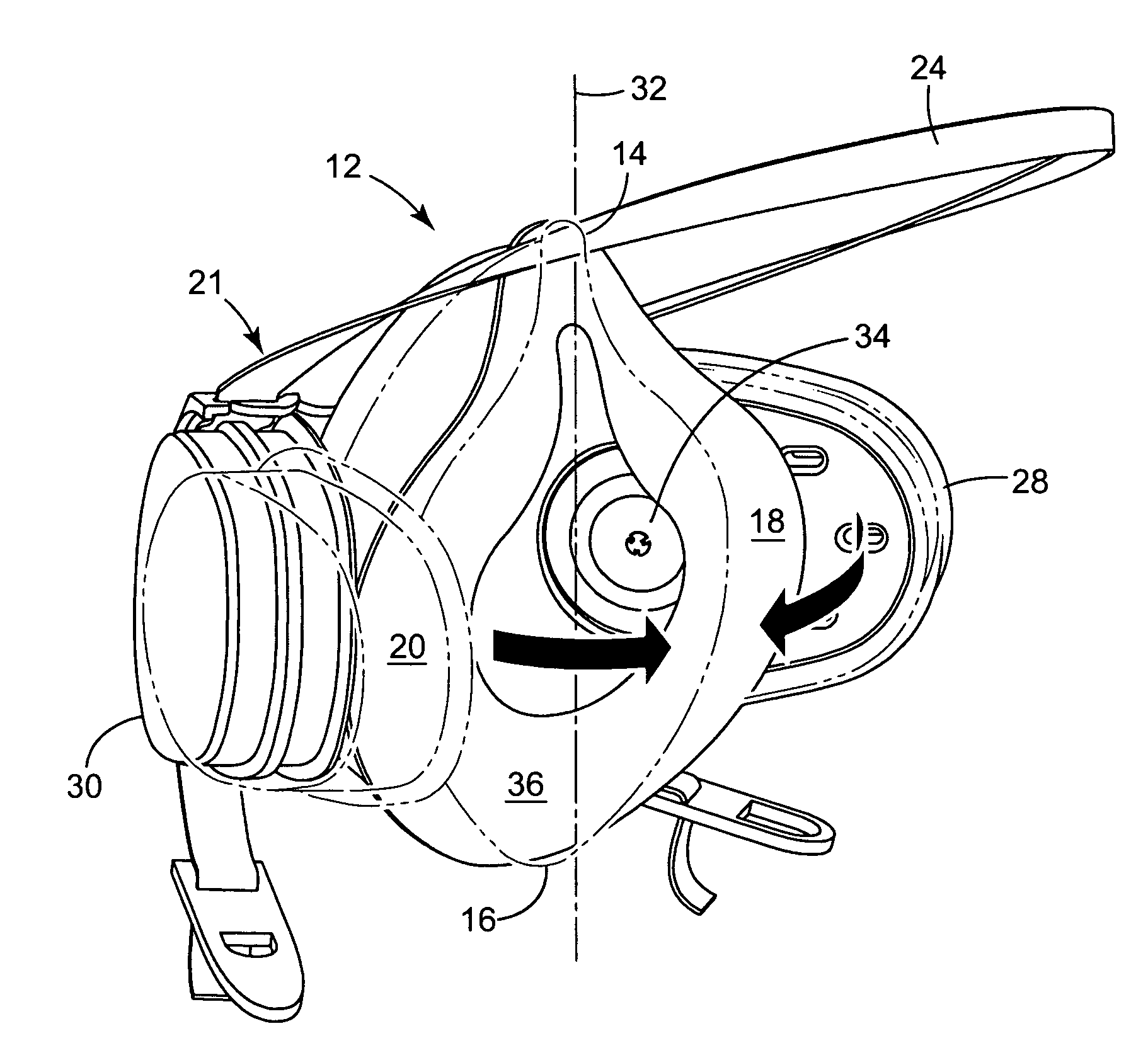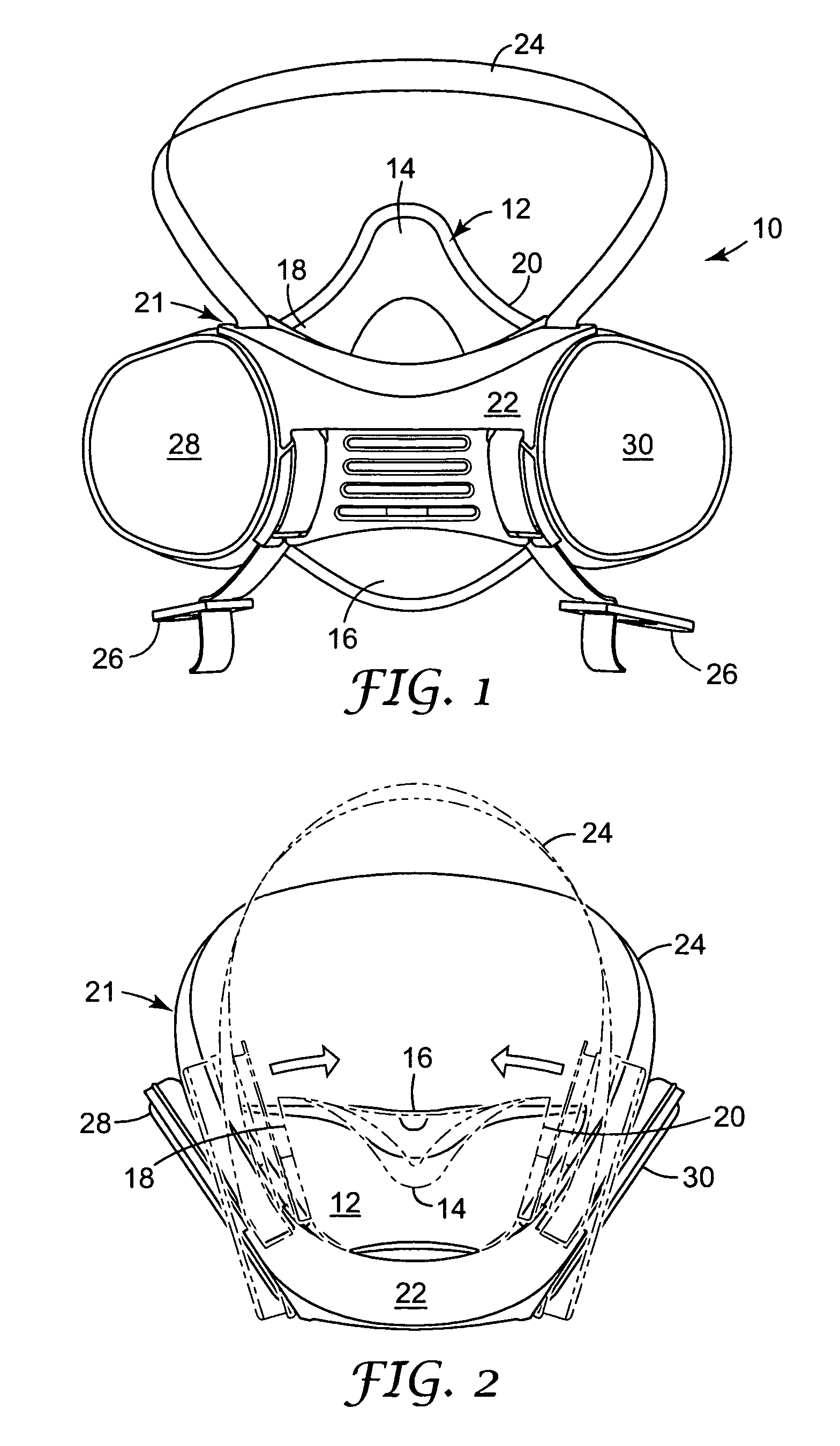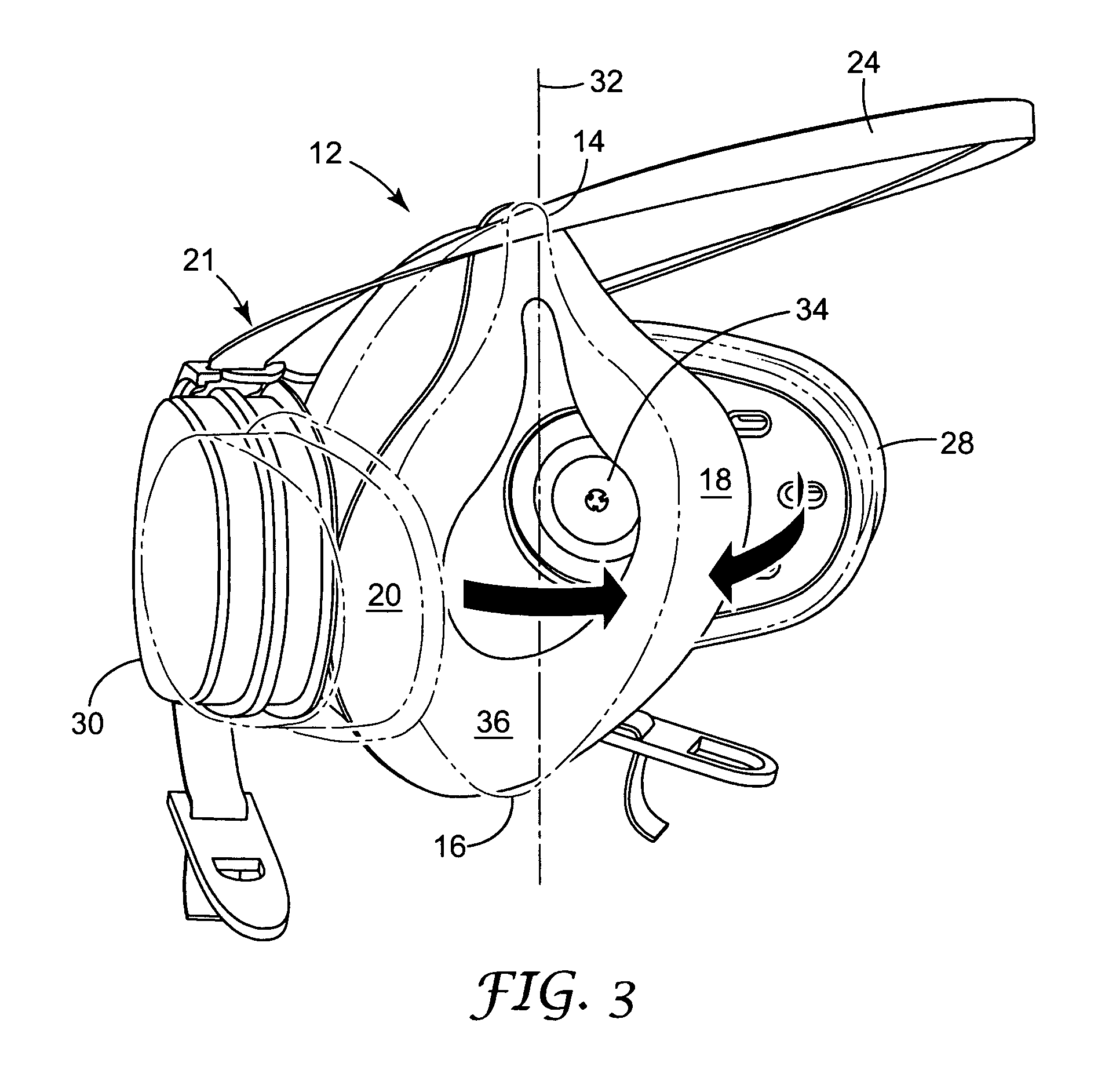Non-elastomeric respirator mask that has deformable cheek portions
a respirator mask and non-elastomeric technology, applied in breathing masks, breathing filters, breathing protection, etc., can solve the problems of masks having a tendency to collapse onto the user's face, heavy respirator wear, and thick rubber, etc., and achieves a sufficiently rigid and thin material
- Summary
- Abstract
- Description
- Claims
- Application Information
AI Technical Summary
Benefits of technology
Problems solved by technology
Method used
Image
Examples
example
[0047]The respiratory mask shown in the drawings was assembled using a non-elastomeric mask body, an elastomeric face sealing ring, a valve body, a valve cover, a carriage, a foam nose bridge, filter cartridges, and a harness. The mask body was formed from a 1.5 mm thick sheet of thermoformable polypropylene (PP) (“Adflex” Q100F from Basell Polyolefins Company Hoofddorp Netherlands) using a vacuum forming device (available from Formech International Ltd Harpenden UK). Material used to form the mask body had a flexural modulus of 1172 MPa and a softing point of 170° C. To mold the mask body, a 30 cm×27 cm section of thermoformable PP sheet was positioned in a frame fixture and heated to approximately 170° C. (the softening point of the material) and placed over the mold form. The mold form, mounted on a flat surface approximating the inner dimensions of the frame fixture, was then raised into the softened sheet and a vacuum was provided through ports on the mold and support surface s...
PUM
 Login to View More
Login to View More Abstract
Description
Claims
Application Information
 Login to View More
Login to View More - R&D
- Intellectual Property
- Life Sciences
- Materials
- Tech Scout
- Unparalleled Data Quality
- Higher Quality Content
- 60% Fewer Hallucinations
Browse by: Latest US Patents, China's latest patents, Technical Efficacy Thesaurus, Application Domain, Technology Topic, Popular Technical Reports.
© 2025 PatSnap. All rights reserved.Legal|Privacy policy|Modern Slavery Act Transparency Statement|Sitemap|About US| Contact US: help@patsnap.com



